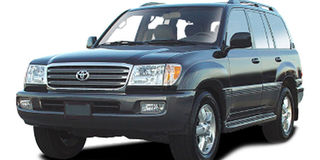What is the difference between 4WD and AWD?

What you need to know:
- 4H (4 High) 4 wheels pulling in conditions where 4WD is needed at speeds over 50 KMH. Vehicles that are full time 4WD are permanently in the 4H range. 4L all four wheels pulling low range during severe driving conditions.
Hello Paul, please teach me how to use/engage the 4wd in both manual and automatic vehicles, especially land cruisers that have small gears labelled 2L-4H. I need your guidance on what the 2L, 4L and 4H mean and when to be used. What is the difference between All Wheel Drive, 4WD and 4×4? Peter
Hello Peter, it is important to understand the difference between AWD (All wheel Drive) and 4WD (Four Wheel Drive) in order to understand how both work. Only then can you come to grips with how to use the different gear ranges: 2L, 2H, 4L and 4H.
AWD and 4WD are both vehicle driving conditions where the engine power or torque is transmitted to all four wheels. On the other hand, 2WD (Two wheel drive) is when only two wheels of a vehicle receive torque from the engine.
There is a difference in functionality and design between AWD and 4WD. The 4WD system allows the driver to switch engine power between two speed ranges H (High) or L (LOW) and transfer it to all four wheels. On the other hand, an AWD system lacks the two speed transfer feature which helps to navigate through different levels of wet or muddy terrain or during towing.
Another major difference between the AWD and 4WD systems is how engine power is shared between the front and rear axles. The 4WD system uses a transfer case to selectively share engine power between the rear and front wheels when engaged, which gives the vehicle ability to navigate or drive in slippery or rocky terrain.
AWD system can only allocate about 10 per cent of power to the rear axle in case the front wheels slip.
It is a common optional feature in some medium segment sports utility vehicles such as the Toyota RAV4 and Harrier whose drivers may need to drive over light snow or muddy terrain. Due to the above, the 4WD system works better than the AWD system on off road extreme slippery or loose terrain.
Application of the AWD system is more fuel efficient and user friendly as it does not need user intervention because it is automatic. 4WD requires user intervention to select when to use 2WD or 4WD in high or low range and adds load and a fuel toll on the engine.
This is why getting the hung of it usually requires some training or guided practice. With the traditional 4WD systems, for both manual and automatic transmission, it is advisable to engage neutral (no gear) before shifting from high to low range or 2WD to 4WD. You can engage gears (manual) or Drive (automatic) after you select the range. This allows easier and seamless transfer and engagement or disengagement when you want to restore normal operation.
2L (2 Low) is when 2 wheels are pulling in low range, an uncommon situation because low range is usually selected when you need all four wheels powered. 2H (2High) is when two wheels are pulling in high range while driving over good terrain in normal conditions. 4H (4 High) 4 wheels pulling in conditions where 4WD is needed at speeds over 50 KMH. Vehicles that are full time 4WD are permanently in the 4H range. 4L all four wheels pulling low range during severe driving conditions.
4WD
Tips.
4WD vehicles work best when they are regularly used and maintained according to manufacturer recommendations. It is best to keep the system lubricated by activating it at least once every few months.
Only use 4WD when you need it to save as much fuel and money as possible.
Driving 4WD on mild, dry conditions can do damage to your front axles, differential gears, and other parts. Always use 2WD on dry pavement.




